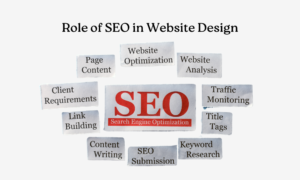Introduction
I’ll say it—blogging isn’t just about typing away your thoughts and hoping for a viral post. It’s a strategic powerhouse that fuels digital marketing success. When done right, it boosts visibility, builds trust, and turns casual visitors into loyal customers.
If you’re still treating your blog as an afterthought, you’re leaving money on the table. A well-crafted blog isn’t just words on a screen—it’s an engine that drives traffic, engagement, and conversions.
What You’ll Learn in This Guide:
✔ How blogging increases website traffic and search rankings
✔ The role of blogging in brand authority and audience trust
✔ How blog content supports lead generation and conversions
✔ Ways to integrate blogging into social media, email marketing, and SEO
✔ Best practices for creating high-impact blog posts
Now, let’s get into the details.
1. Blogging Fuels Website Traffic and SEO
Your website without a blog is like a car without fuel—it won’t go far. Blogging keeps your site fresh and dynamic, which search engines (like Google) love.
How Blogging Improves SEO:
New content = Better search rankings – Google favors fresh, relevant content. Regular blogging helps you stay visible and competitive.
Targeting long-tail keywords – Blogs let you naturally incorporate search terms your audience is looking for.
Internal linking = More time on site – A blog allows you to link to other valuable pages (like your services or product pages), keeping visitors engaged longer.
Example: If you’re running an e-commerce site, a blog post on “How to Choose the Best Running Shoes” can naturally guide readers to your store’s shoe collection.
Related Read: A Beginner’s Guide to Digital Marketing
2. Blogging Establishes Brand Authority and Trust
Want your brand to be seen as a credible expert? Start educating your audience through well-researched, valuable blog posts.
Why Authority Matters:
✔ People trust businesses that consistently offer value before asking for a sale.
✔ When your blog becomes a go-to resource, customers naturally trust your products or services.
✔ Answering common customer questions reduces doubts and improves conversions.
Example: A marketing agency that regularly shares insights on website conversion tracking is more likely to attract clients who need measurable marketing solutions.
3. Blogging Boosts Lead Generation and Sales

Not all website visitors are ready to buy immediately. A blog nurtures potential customers, warming them up before they make a purchase.
How Blogs Generate Leads:
Call-to-Action (CTA) Magic – Well-placed CTAs in blog posts encourage visitors to sign up for a newsletter, download an eBook, or book a consultation.
SEO-driven traffic = More leads – The more people find your blog via search, the higher the chances of conversion.
Answering objections – If customers are hesitant about buying, a blog can clarify doubts and remove friction in the buying process.
Example: A SaaS company blogging about “How to Automate Marketing Campaigns” can include a CTA directing readers to their top email marketing automation tools.
4. Blogging Fuels Social Media and Email Marketing

Think of your blog as a content hub—it supplies fresh material for your social media and email campaigns.
How Blogs Support Social Media Marketing:
Repurpose blog content – Turn a long-form blog post into short LinkedIn posts, tweets, or Instagram carousels.
Drive engagement – Well-crafted blogs get shared more often, increasing brand exposure.
Encourage discussions – Blogs with strong opinions or data insights spark conversations and debates online.
Example: A blog post on “A/B Testing for Better Marketing Campaigns” can easily be broken into multiple LinkedIn posts, guiding followers to A/B testing strategies.
Related Read: How to Design Emails That Convert
5. Blogging Creates Evergreen Content That Works Long-Term
Unlike social media posts that fade in hours, a well-optimized blog post can drive traffic for years.
Benefits of Evergreen Blog Content:
✔ Continues to rank on Google long after publication
✔ Can be updated to stay relevant without needing a complete rewrite
✔ Brings consistent traffic, leads, and sales with minimal effort
Example: A post titled “The Ultimate Guide to PPC Campaigns” will remain valuable for years, unlike a trending news article that loses relevance quickly.
Related Read: Maximizing ROI with PPC Campaigns
6. Blogging Helps You Understand Your Audience Better
Blogging isn’t just about educating your audience—it’s also a two-way street where you learn from them.
How Blogging Helps You Gain Insights:
Analyzing comments and feedback – What questions are readers asking? Their concerns = your next blog topic.
Tracking performance with analytics – Which posts are driving the most traffic? Use this data to refine your strategy.
Identifying customer pain points – Recurring themes in your comments and emails can guide product improvements or service tweaks.
Related Read: Google Analytics: Understanding Your Website Traffic
7. Best Practices for a High-Impact Blog Strategy
Blogging isn’t just about writing—it’s about writing the right way to maximize impact.
Tips for Writing Effective Blog Posts:
✔ Write for humans, optimize for search engines – Prioritize clarity, not just keyword stuffing.
✔ Use engaging headlines – If your title doesn’t hook, nobody will read the post.
✔ Break up text – Use subheadings, bullet points, and short paragraphs for easy reading.
✔ Include visuals – Images, infographics, and videos boost engagement and retention.
Related Read: Visual Content in Web Design
Final Thoughts
If your website isn’t getting the traffic, leads, or engagement you expected, your blog might be the missing puzzle piece.
✔ It drives organic traffic and boosts search rankings.
✔ It establishes credibility and builds brand trust.
✔ It nurtures leads and converts visitors into customers.Bottom line? If you’re serious about digital growth, blogging isn’t optional—it’s a necessity.


